
Director
Viennale 2022 Trailer
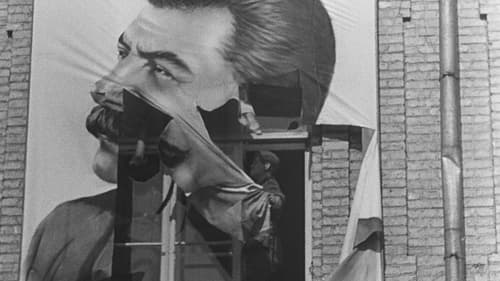
Producer
1941년 9월 29일에서 30일, 나치 특수작전부대 C대 소속 존더코만도 4a 부대는 남부 경찰 연대와 우크라이나 보조 경찰의 협력하에 지역민들의 저항 없이 키이우 북서쪽 바비 야르 협곡으로 3만 3,771명의 유대인을 이동시켜 총살한다.

Editor
1941년 9월 29일에서 30일, 나치 특수작전부대 C대 소속 존더코만도 4a 부대는 남부 경찰 연대와 우크라이나 보조 경찰의 협력하에 지역민들의 저항 없이 키이우 북서쪽 바비 야르 협곡으로 3만 3,771명의 유대인을 이동시켜 총살한다.

Screenplay
1941년 9월 29일에서 30일, 나치 특수작전부대 C대 소속 존더코만도 4a 부대는 남부 경찰 연대와 우크라이나 보조 경찰의 협력하에 지역민들의 저항 없이 키이우 북서쪽 바비 야르 협곡으로 3만 3,771명의 유대인을 이동시켜 총살한다.

Director
1941년 9월 29일에서 30일, 나치 특수작전부대 C대 소속 존더코만도 4a 부대는 남부 경찰 연대와 우크라이나 보조 경찰의 협력하에 지역민들의 저항 없이 키이우 북서쪽 바비 야르 협곡으로 3만 3,771명의 유대인을 이동시켜 총살한다.

Editor
1946년 우크라이나 키이우에서 유태인 학살을 자행한 나치 전범들의 재판에 관한 아카이브 필름들을 발굴, 재구성한 영화이다. 열두 명의 독일 군인들이 하나씩 증인석에서 자신들이 저지른 범죄에 대해 증언하고 목격자와 생존자들의 생생한 목소리가 고스란히 역사의 현장을 전한다. 로즈니차의 전작 "바비 야르 협곡"(2021)에서 파생한 이 영화는 전쟁을 즐긴 범죄자들, 그리고 살아남은 사람들에 대한 이야기이다.

Producer
1946년 우크라이나 키이우에서 유태인 학살을 자행한 나치 전범들의 재판에 관한 아카이브 필름들을 발굴, 재구성한 영화이다. 열두 명의 독일 군인들이 하나씩 증인석에서 자신들이 저지른 범죄에 대해 증언하고 목격자와 생존자들의 생생한 목소리가 고스란히 역사의 현장을 전한다. 로즈니차의 전작 "바비 야르 협곡"(2021)에서 파생한 이 영화는 전쟁을 즐긴 범죄자들, 그리고 살아남은 사람들에 대한 이야기이다.

Writer
1946년 우크라이나 키이우에서 유태인 학살을 자행한 나치 전범들의 재판에 관한 아카이브 필름들을 발굴, 재구성한 영화이다. 열두 명의 독일 군인들이 하나씩 증인석에서 자신들이 저지른 범죄에 대해 증언하고 목격자와 생존자들의 생생한 목소리가 고스란히 역사의 현장을 전한다. 로즈니차의 전작 "바비 야르 협곡"(2021)에서 파생한 이 영화는 전쟁을 즐긴 범죄자들, 그리고 살아남은 사람들에 대한 이야기이다.

Director
1946년 우크라이나 키이우에서 유태인 학살을 자행한 나치 전범들의 재판에 관한 아카이브 필름들을 발굴, 재구성한 영화이다. 열두 명의 독일 군인들이 하나씩 증인석에서 자신들이 저지른 범죄에 대해 증언하고 목격자와 생존자들의 생생한 목소리가 고스란히 역사의 현장을 전한다. 로즈니차의 전작 "바비 야르 협곡"(2021)에서 파생한 이 영화는 전쟁을 즐긴 범죄자들, 그리고 살아남은 사람들에 대한 이야기이다.

Writer
제2차 세계대전에서 독일에 대한 영국의 공습 기록을 담은 영화.

Producer
제2차 세계대전에서 독일에 대한 영국의 공습 기록을 담은 영화.

Director
제2차 세계대전에서 독일에 대한 영국의 공습 기록을 담은 영화.
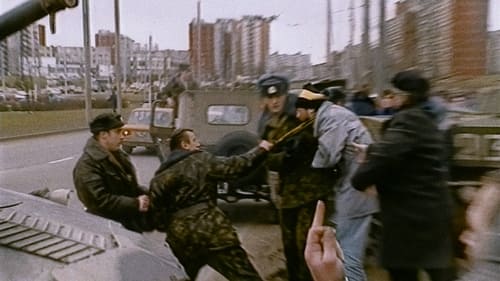
Screenplay
비타우타스 란즈베르기스는 음악가이자 리투아니아 독립운동을 이끈 카리스마 있는 지도자다. 1990년에 그는 소련 탈퇴를 선언하고 고르바초프에게 리투아니아의 주권을 인정할 것을 요구했다. 소련의 역사적 붕괴로부터 30년이 흐른 지금, 영화는 리투아니아 독립 투쟁의 비화를 들려준다. 감독은 인터뷰와 아카이브 영상 자료를 결합함으로써, 역사를 만든 한 남자의 초상을 매혹적으로 그린다.

Producer
비타우타스 란즈베르기스는 음악가이자 리투아니아 독립운동을 이끈 카리스마 있는 지도자다. 1990년에 그는 소련 탈퇴를 선언하고 고르바초프에게 리투아니아의 주권을 인정할 것을 요구했다. 소련의 역사적 붕괴로부터 30년이 흐른 지금, 영화는 리투아니아 독립 투쟁의 비화를 들려준다. 감독은 인터뷰와 아카이브 영상 자료를 결합함으로써, 역사를 만든 한 남자의 초상을 매혹적으로 그린다.

Director
비타우타스 란즈베르기스는 음악가이자 리투아니아 독립운동을 이끈 카리스마 있는 지도자다. 1990년에 그는 소련 탈퇴를 선언하고 고르바초프에게 리투아니아의 주권을 인정할 것을 요구했다. 소련의 역사적 붕괴로부터 30년이 흐른 지금, 영화는 리투아니아 독립 투쟁의 비화를 들려준다. 감독은 인터뷰와 아카이브 영상 자료를 결합함으로써, 역사를 만든 한 남자의 초상을 매혹적으로 그린다.

Writer
우크라이나 영화감독 세르히 로즈니차는 아카이브 자료를 통해 관객을 가르니에에서 열리는 환상적인 밤으로 초대한다. 엄청난 팡파레와 함께, 1950~60년대의 세계적인 스타들과 파리 사교계의 최상류층 사람들은 마리아 칼라스의 음악을 듣기 위해 모인 열광적인 관객들 앞에서 파리 오페라극장 팔레 가르니에의 계단을 오른다.

Director
우크라이나 영화감독 세르히 로즈니차는 아카이브 자료를 통해 관객을 가르니에에서 열리는 환상적인 밤으로 초대한다. 엄청난 팡파레와 함께, 1950~60년대의 세계적인 스타들과 파리 사교계의 최상류층 사람들은 마리아 칼라스의 음악을 듣기 위해 모인 열광적인 관객들 앞에서 파리 오페라극장 팔레 가르니에의 계단을 오른다.

Director
The film shows life in contemporary Sarajevo as reflected through glass covers of the black-and-white photos of its defenders, taken by the Bosnian photographer Milomir Kovacevic in 1992 during the siege of the city.

Director
From an Iranian village to the Palais Garnier, from a hospital in Villejuif in the South of Algeria, voices are raised ... Four filmmakers, Julie Deliquet, Karim Moussaoui, Sergei Loznitsa and Jafar Panahi film songs of women and evoke in their own way, the world in which each of them lives.
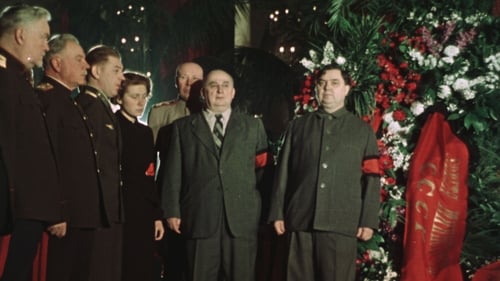
Producer
1924년부터 1953년까지 소비에트 연방 최고 권력자로 군림한 스탈린은 ‘위대한 지도자’로 불리며 제2차 세계대전을 승리로 이끌었지만, ‘조지아의 인간 백정’이라는 별명을 얻을 정도로 무자비한 숙청을 단행한 두 얼굴을 가진 지도자다. 스탈린의 장례식을 담은 이 보기 드문 다큐멘터리는 1953년 3월 5일 스탈린이 세상을 떠나면서 시작된다. 흑백과 컬러를 넘나드는 당시의 자료 화면들은 소비에트 국민의 슬픔과 국장(國葬)의 모습을 2시간이 넘는 러닝타임 동안 내레이션도 없이 담담하게 보여준다.

Screenplay
1924년부터 1953년까지 소비에트 연방 최고 권력자로 군림한 스탈린은 ‘위대한 지도자’로 불리며 제2차 세계대전을 승리로 이끌었지만, ‘조지아의 인간 백정’이라는 별명을 얻을 정도로 무자비한 숙청을 단행한 두 얼굴을 가진 지도자다. 스탈린의 장례식을 담은 이 보기 드문 다큐멘터리는 1953년 3월 5일 스탈린이 세상을 떠나면서 시작된다. 흑백과 컬러를 넘나드는 당시의 자료 화면들은 소비에트 국민의 슬픔과 국장(國葬)의 모습을 2시간이 넘는 러닝타임 동안 내레이션도 없이 담담하게 보여준다.

Director
1924년부터 1953년까지 소비에트 연방 최고 권력자로 군림한 스탈린은 ‘위대한 지도자’로 불리며 제2차 세계대전을 승리로 이끌었지만, ‘조지아의 인간 백정’이라는 별명을 얻을 정도로 무자비한 숙청을 단행한 두 얼굴을 가진 지도자다. 스탈린의 장례식을 담은 이 보기 드문 다큐멘터리는 1953년 3월 5일 스탈린이 세상을 떠나면서 시작된다. 흑백과 컬러를 넘나드는 당시의 자료 화면들은 소비에트 국민의 슬픔과 국장(國葬)의 모습을 2시간이 넘는 러닝타임 동안 내레이션도 없이 담담하게 보여준다.

Screenplay
Every year, on the 9th of May, people gather in Treptower Park in Berlin. They come dressed in their best outfits or in Soviet military uniform. They carry flags, banners and posters. They lay flowers at the monument to the Soviet soldier; they sing, dance and drink. They celebrate the victory of the Soviet Union over Nazi Germany.The film is a direct reportage from Treptower Park 72 years after the victory.

Director of Photography
Every year, on the 9th of May, people gather in Treptower Park in Berlin. They come dressed in their best outfits or in Soviet military uniform. They carry flags, banners and posters. They lay flowers at the monument to the Soviet soldier; they sing, dance and drink. They celebrate the victory of the Soviet Union over Nazi Germany.The film is a direct reportage from Treptower Park 72 years after the victory.

Producer
Every year, on the 9th of May, people gather in Treptower Park in Berlin. They come dressed in their best outfits or in Soviet military uniform. They carry flags, banners and posters. They lay flowers at the monument to the Soviet soldier; they sing, dance and drink. They celebrate the victory of the Soviet Union over Nazi Germany.The film is a direct reportage from Treptower Park 72 years after the victory.

Director
Every year, on the 9th of May, people gather in Treptower Park in Berlin. They come dressed in their best outfits or in Soviet military uniform. They carry flags, banners and posters. They lay flowers at the monument to the Soviet soldier; they sing, dance and drink. They celebrate the victory of the Soviet Union over Nazi Germany.The film is a direct reportage from Treptower Park 72 years after the victory.

Producer
1930년 소련, 공산당의 지도자들은 여러 명의 경제학자와 기술자들을 재판정에 세운다. 이들이 비밀리에 반역을 계획했다는 것이다. 비록 이는 사실과 멀었지만 이 재판은 미리 짜여진 각본에 의해, 처음부터 정해졌던 결말을 향해 진행된다. 그리고 감독은 당시 아카이브 자료를 편집하여 이 재판이 어떤 과정 속에 진행됐는지 생생하고 자세하게 재구성한다. 아카이브 필름 활용의 흥미로운 사례를 보여주는 다큐멘터리. (2021 유라시아 영화제)

Screenplay
1930년 소련, 공산당의 지도자들은 여러 명의 경제학자와 기술자들을 재판정에 세운다. 이들이 비밀리에 반역을 계획했다는 것이다. 비록 이는 사실과 멀었지만 이 재판은 미리 짜여진 각본에 의해, 처음부터 정해졌던 결말을 향해 진행된다. 그리고 감독은 당시 아카이브 자료를 편집하여 이 재판이 어떤 과정 속에 진행됐는지 생생하고 자세하게 재구성한다. 아카이브 필름 활용의 흥미로운 사례를 보여주는 다큐멘터리. (2021 유라시아 영화제)

Editor
1930년 소련, 공산당의 지도자들은 여러 명의 경제학자와 기술자들을 재판정에 세운다. 이들이 비밀리에 반역을 계획했다는 것이다. 비록 이는 사실과 멀었지만 이 재판은 미리 짜여진 각본에 의해, 처음부터 정해졌던 결말을 향해 진행된다. 그리고 감독은 당시 아카이브 자료를 편집하여 이 재판이 어떤 과정 속에 진행됐는지 생생하고 자세하게 재구성한다. 아카이브 필름 활용의 흥미로운 사례를 보여주는 다큐멘터리. (2021 유라시아 영화제)

Director
1930년 소련, 공산당의 지도자들은 여러 명의 경제학자와 기술자들을 재판정에 세운다. 이들이 비밀리에 반역을 계획했다는 것이다. 비록 이는 사실과 멀었지만 이 재판은 미리 짜여진 각본에 의해, 처음부터 정해졌던 결말을 향해 진행된다. 그리고 감독은 당시 아카이브 자료를 편집하여 이 재판이 어떤 과정 속에 진행됐는지 생생하고 자세하게 재구성한다. 아카이브 필름 활용의 흥미로운 사례를 보여주는 다큐멘터리. (2021 유라시아 영화제)

Associate Producer
전쟁으로 분열된 우크라이나 동부 돈바스 지역의 전쟁과 분열 상황을 희화한 작품. 는 연결되지 않는 파편적 장소와 에피소드들로 우크라이나의 현주소를 드러낸다. 거리, 회의장, 산부인과, 검문소, 버스, 사무실 등 다양한 공간에서 사람들은 돌출 행동을 한다. 관습과 편견 나아가 전형성을 기반으로 하는 동시에 뒤트는 이 영화는 마치 한바탕 소동극을 보는 것처럼 인물들의 부조리한 행동에 주목한다. 그리고 행위가 일어나는 공간을 지속적으로 의심하게 한다. 영화 속 공간이 모두 연극의 무대 공간 같기 때문이다. 전체를 관통하는 내러티브 없이 개별 인물들의 말과 행위를 나열하듯 풀어내던 영화는 점차 왜곡되고 부패한 사회를 마주하게 한다. 규칙도, 인권도, 신뢰도 무너진 사회에서 분열은 계속된다. 극의 마지막 장면은 지금까지의 소동들에 대한 또 다른 층위를 만들어낸다. 시작과 끝 사이에 일어난 다양한 상황에 대한 새로운 독해를 불러오는 놀라운 통증의 순간이다.

Screenplay
전쟁으로 분열된 우크라이나 동부 돈바스 지역의 전쟁과 분열 상황을 희화한 작품. 는 연결되지 않는 파편적 장소와 에피소드들로 우크라이나의 현주소를 드러낸다. 거리, 회의장, 산부인과, 검문소, 버스, 사무실 등 다양한 공간에서 사람들은 돌출 행동을 한다. 관습과 편견 나아가 전형성을 기반으로 하는 동시에 뒤트는 이 영화는 마치 한바탕 소동극을 보는 것처럼 인물들의 부조리한 행동에 주목한다. 그리고 행위가 일어나는 공간을 지속적으로 의심하게 한다. 영화 속 공간이 모두 연극의 무대 공간 같기 때문이다. 전체를 관통하는 내러티브 없이 개별 인물들의 말과 행위를 나열하듯 풀어내던 영화는 점차 왜곡되고 부패한 사회를 마주하게 한다. 규칙도, 인권도, 신뢰도 무너진 사회에서 분열은 계속된다. 극의 마지막 장면은 지금까지의 소동들에 대한 또 다른 층위를 만들어낸다. 시작과 끝 사이에 일어난 다양한 상황에 대한 새로운 독해를 불러오는 놀라운 통증의 순간이다.

Director
전쟁으로 분열된 우크라이나 동부 돈바스 지역의 전쟁과 분열 상황을 희화한 작품. 는 연결되지 않는 파편적 장소와 에피소드들로 우크라이나의 현주소를 드러낸다. 거리, 회의장, 산부인과, 검문소, 버스, 사무실 등 다양한 공간에서 사람들은 돌출 행동을 한다. 관습과 편견 나아가 전형성을 기반으로 하는 동시에 뒤트는 이 영화는 마치 한바탕 소동극을 보는 것처럼 인물들의 부조리한 행동에 주목한다. 그리고 행위가 일어나는 공간을 지속적으로 의심하게 한다. 영화 속 공간이 모두 연극의 무대 공간 같기 때문이다. 전체를 관통하는 내러티브 없이 개별 인물들의 말과 행위를 나열하듯 풀어내던 영화는 점차 왜곡되고 부패한 사회를 마주하게 한다. 규칙도, 인권도, 신뢰도 무너진 사회에서 분열은 계속된다. 극의 마지막 장면은 지금까지의 소동들에 대한 또 다른 층위를 만들어낸다. 시작과 끝 사이에 일어난 다양한 상황에 대한 새로운 독해를 불러오는 놀라운 통증의 순간이다.

Screenplay
시베리아 감옥에 있는 남편에게 보낸 소포가 반송되자 아내는 걱정 어린 마음에 남편의 상태를 확인하기 위해 먼 여정에 오른다. 도착하자마자 그녀를 반기는 것은 또 다른 곤경이다.

Director
시베리아 감옥에 있는 남편에게 보낸 소포가 반송되자 아내는 걱정 어린 마음에 남편의 상태를 확인하기 위해 먼 여정에 오른다. 도착하자마자 그녀를 반기는 것은 또 다른 곤경이다.
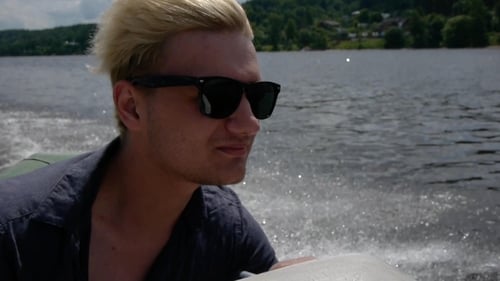
himself
Alexey is shooting a movie about himself. He is in search of a boyfriend. Everything would be alright, if Alexey's mother could accept his sexuality. Alexey comes to visit her and admits that he likes boys, saying 'Don't you anticipate any grandchildren from me'. We find Alexey at Tarkovsky film festival, where he apparently came to rest. Alexey meets Grisha, and a stormy holiday romance begins.

Writer
The new film from Sergei Loznitsa (Maidan, The Event) is a stark yet rich and complex portrait of tourists visiting the grounds of former Nazi extermination camps, and a sometimes sardonic study of the relationship (or the clash) between contemporary culture and the sanctity of the site.

Director of Photography
The new film from Sergei Loznitsa (Maidan, The Event) is a stark yet rich and complex portrait of tourists visiting the grounds of former Nazi extermination camps, and a sometimes sardonic study of the relationship (or the clash) between contemporary culture and the sanctity of the site.

Director
The new film from Sergei Loznitsa (Maidan, The Event) is a stark yet rich and complex portrait of tourists visiting the grounds of former Nazi extermination camps, and a sometimes sardonic study of the relationship (or the clash) between contemporary culture and the sanctity of the site.

Producer
In August 1991 a failed coup d'état attempt (known as Putsch) led by a group of hard-core communists in Moscow, ended the 70-year-long rule of the Soviets. The USSR collapsed soon after, and the tricolour of the sovereign Russian Federation flew over Kremlin. As president Gorbachev was detained by the coup leaders, state-run TV and radio channels, usurped by the putschists, broadcast Tchaikovsky's "Swan Lake" instead of news bulletins, and crowds of protestors gathered around Moscow's White House, preparing to defend the stronghold of democratic opposition led by Boris Yeltsin, in the city of Leningrad thousands of confused, scared, excited and desperate people poured into the streets to become a part of the event, which was supposed to change their destiny. A quarter of a century later, Sergei Loznitsa revisits the dramatic moments of August 1991 and casts an eye on the event which was hailed worldwide as the birth of "Russian democracy".

Writer
In August 1991 a failed coup d'état attempt (known as Putsch) led by a group of hard-core communists in Moscow, ended the 70-year-long rule of the Soviets. The USSR collapsed soon after, and the tricolour of the sovereign Russian Federation flew over Kremlin. As president Gorbachev was detained by the coup leaders, state-run TV and radio channels, usurped by the putschists, broadcast Tchaikovsky's "Swan Lake" instead of news bulletins, and crowds of protestors gathered around Moscow's White House, preparing to defend the stronghold of democratic opposition led by Boris Yeltsin, in the city of Leningrad thousands of confused, scared, excited and desperate people poured into the streets to become a part of the event, which was supposed to change their destiny. A quarter of a century later, Sergei Loznitsa revisits the dramatic moments of August 1991 and casts an eye on the event which was hailed worldwide as the birth of "Russian democracy".

Editor
In August 1991 a failed coup d'état attempt (known as Putsch) led by a group of hard-core communists in Moscow, ended the 70-year-long rule of the Soviets. The USSR collapsed soon after, and the tricolour of the sovereign Russian Federation flew over Kremlin. As president Gorbachev was detained by the coup leaders, state-run TV and radio channels, usurped by the putschists, broadcast Tchaikovsky's "Swan Lake" instead of news bulletins, and crowds of protestors gathered around Moscow's White House, preparing to defend the stronghold of democratic opposition led by Boris Yeltsin, in the city of Leningrad thousands of confused, scared, excited and desperate people poured into the streets to become a part of the event, which was supposed to change their destiny. A quarter of a century later, Sergei Loznitsa revisits the dramatic moments of August 1991 and casts an eye on the event which was hailed worldwide as the birth of "Russian democracy".

Director
In August 1991 a failed coup d'état attempt (known as Putsch) led by a group of hard-core communists in Moscow, ended the 70-year-long rule of the Soviets. The USSR collapsed soon after, and the tricolour of the sovereign Russian Federation flew over Kremlin. As president Gorbachev was detained by the coup leaders, state-run TV and radio channels, usurped by the putschists, broadcast Tchaikovsky's "Swan Lake" instead of news bulletins, and crowds of protestors gathered around Moscow's White House, preparing to defend the stronghold of democratic opposition led by Boris Yeltsin, in the city of Leningrad thousands of confused, scared, excited and desperate people poured into the streets to become a part of the event, which was supposed to change their destiny. A quarter of a century later, Sergei Loznitsa revisits the dramatic moments of August 1991 and casts an eye on the event which was hailed worldwide as the birth of "Russian democracy".

Writer
Jewish cemetery in Riga, Latvia became a park in the 1960s. Now the park becomes a place for alcoholics and American tourists, but still he last witness of violent history. A film dedicated to Jewish community.

Director
Jewish cemetery in Riga, Latvia became a park in the 1960s. Now the park becomes a place for alcoholics and American tourists, but still he last witness of violent history. A film dedicated to Jewish community.

Director
Seven versions of Riga, the city on the Baltic Sea, and its features as seen by outstanding European film directors: Sergei Loznitsa (The Old Jewish Cemetery), Ivars Seleckis (On Ķīpsala), Audrius Stonys (Riga Boats), Jaak Kilmi (Littering Prohibited!), Jon Bang Karlsen (Cats in Riga), Rainer Komers (Daugava Delta), and Bettina Henkel (Theatre Street 6).
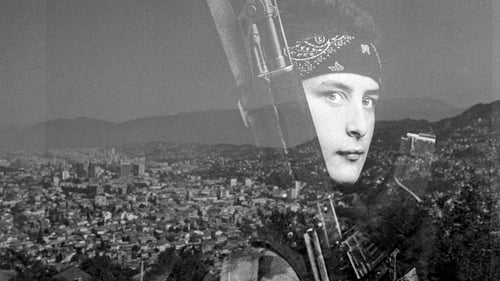
Director
Thirteen European directors explore the theme of Sarajevo; what this city has represented in European history over the past hundred years, and what Sarajevo stands for today in Europe. These eminent filmmakers of different generations and origins offer exceptional singular styles and visions.

Director of Photography
〈마이단〉은 2013‒2014년 겨울에 우크라이나 키이우에서 일어난 대통령 야누코비치 정권에 반대하는 시민 봉기를 기록한다. 마이단 광장에서 시작되는 50만 명의 강력하면서도 평화로운 집회의 시작부터 시위대와 진압 경찰과의 유혈 거리 전투까지, 이 영화는 혁명의 진행 과정을 따라간다. 〈마이단〉은 각성하여 정체성을 재발견한 국가의 초상이다. 세르히 로즈니차 감독은 대중 봉기의 본질을 현 정치적 문제를 넘어 사회적, 문화적, 철학적 현상으로서 본다. 열정, 영웅적 투쟁, 공포, 용기, 열망, 사람들의 연대, 민속 문화, 열정 및 자기희생이 강력하게 혼합된 〈마이단〉은 고전 영화 제작 스타일과 다큐멘터리적 시급성을 결합한 놀라운 영화적 캔버스라 할 수 있다.

Editor
〈마이단〉은 2013‒2014년 겨울에 우크라이나 키이우에서 일어난 대통령 야누코비치 정권에 반대하는 시민 봉기를 기록한다. 마이단 광장에서 시작되는 50만 명의 강력하면서도 평화로운 집회의 시작부터 시위대와 진압 경찰과의 유혈 거리 전투까지, 이 영화는 혁명의 진행 과정을 따라간다. 〈마이단〉은 각성하여 정체성을 재발견한 국가의 초상이다. 세르히 로즈니차 감독은 대중 봉기의 본질을 현 정치적 문제를 넘어 사회적, 문화적, 철학적 현상으로서 본다. 열정, 영웅적 투쟁, 공포, 용기, 열망, 사람들의 연대, 민속 문화, 열정 및 자기희생이 강력하게 혼합된 〈마이단〉은 고전 영화 제작 스타일과 다큐멘터리적 시급성을 결합한 놀라운 영화적 캔버스라 할 수 있다.

Writer
〈마이단〉은 2013‒2014년 겨울에 우크라이나 키이우에서 일어난 대통령 야누코비치 정권에 반대하는 시민 봉기를 기록한다. 마이단 광장에서 시작되는 50만 명의 강력하면서도 평화로운 집회의 시작부터 시위대와 진압 경찰과의 유혈 거리 전투까지, 이 영화는 혁명의 진행 과정을 따라간다. 〈마이단〉은 각성하여 정체성을 재발견한 국가의 초상이다. 세르히 로즈니차 감독은 대중 봉기의 본질을 현 정치적 문제를 넘어 사회적, 문화적, 철학적 현상으로서 본다. 열정, 영웅적 투쟁, 공포, 용기, 열망, 사람들의 연대, 민속 문화, 열정 및 자기희생이 강력하게 혼합된 〈마이단〉은 고전 영화 제작 스타일과 다큐멘터리적 시급성을 결합한 놀라운 영화적 캔버스라 할 수 있다.

Director
〈마이단〉은 2013‒2014년 겨울에 우크라이나 키이우에서 일어난 대통령 야누코비치 정권에 반대하는 시민 봉기를 기록한다. 마이단 광장에서 시작되는 50만 명의 강력하면서도 평화로운 집회의 시작부터 시위대와 진압 경찰과의 유혈 거리 전투까지, 이 영화는 혁명의 진행 과정을 따라간다. 〈마이단〉은 각성하여 정체성을 재발견한 국가의 초상이다. 세르히 로즈니차 감독은 대중 봉기의 본질을 현 정치적 문제를 넘어 사회적, 문화적, 철학적 현상으로서 본다. 열정, 영웅적 투쟁, 공포, 용기, 열망, 사람들의 연대, 민속 문화, 열정 및 자기희생이 강력하게 혼합된 〈마이단〉은 고전 영화 제작 스타일과 다큐멘터리적 시급성을 결합한 놀라운 영화적 캔버스라 할 수 있다.

Director
A remote village in the Northwest of Russia. A mental asylum is located in an old wooden house. The place and its inhabitants seem to be untouched by civilization. In this pristine setting, no articulate human voice is heard, and pain is muted. The landscapes and buildings are not so much inhabited as lightly entwined and then passed through by their anonymous residents, like some creeping mist. Phantoms half stuck, half undone in a phantom world—lost persons from a lost society?
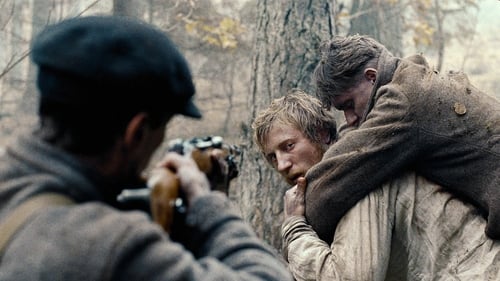
Screenplay
독일과 러시아가 대치한 2차 세계대전이 영화의 배경이고, 지금은 독립한 벨라루스에서 벌어진 사건을 다루고 있다. 철도 노동자인 수셰냐가 게릴라에게 끌려간다. 기차 탈선 사고가 일어나자 그들은 수셰냐를 독일에 협조한 반역자로 몰고 간다. 그러나, 총살 직전에 게릴라가 총에 맞으면서 상황은 변모한다. 는 회상의 스타일을 통해 수세냐를 포함한 주요 인물들에게 어떤 일들이 일어났는지를 보여준다. 그것은 이들을 둘러싼 역사적인 맥락을 제공해 주며, 그 누구의 잘못도 아닌 전쟁의 참상 그 자체라는 것을 이해하도록 만들어 준다. 애국심에 불타는 게릴라들도, 민중들을 괴롭히는 독일병사들도, 모두가 전쟁에서 주어진 역할을 하는 인물들이다. 그 가운데 아무 힘이 없는 노동자 수셰냐가 있다. 흥미로운 것은 이 모든 혼돈 속에서도 끝내 살아남는 자가 수셰냐다. 로즈니차 감독은 삶은 민중과 함께 계속된다고 말한다. (이상용_2012년 제17회 부산국제영화제)

Director
독일과 러시아가 대치한 2차 세계대전이 영화의 배경이고, 지금은 독립한 벨라루스에서 벌어진 사건을 다루고 있다. 철도 노동자인 수셰냐가 게릴라에게 끌려간다. 기차 탈선 사고가 일어나자 그들은 수셰냐를 독일에 협조한 반역자로 몰고 간다. 그러나, 총살 직전에 게릴라가 총에 맞으면서 상황은 변모한다. 는 회상의 스타일을 통해 수세냐를 포함한 주요 인물들에게 어떤 일들이 일어났는지를 보여준다. 그것은 이들을 둘러싼 역사적인 맥락을 제공해 주며, 그 누구의 잘못도 아닌 전쟁의 참상 그 자체라는 것을 이해하도록 만들어 준다. 애국심에 불타는 게릴라들도, 민중들을 괴롭히는 독일병사들도, 모두가 전쟁에서 주어진 역할을 하는 인물들이다. 그 가운데 아무 힘이 없는 노동자 수셰냐가 있다. 흥미로운 것은 이 모든 혼돈 속에서도 끝내 살아남는 자가 수셰냐다. 로즈니차 감독은 삶은 민중과 함께 계속된다고 말한다. (이상용_2012년 제17회 부산국제영화제)

Cinematography
In the middle of June the village of Santo Antonio de Mixoes da Serra in the Valdreu region of Northern Portugal honours its Patron Saint with a very special festival. On this day the local farmers bring their animals to the church – cows, horses, dogs, cats, chickens, rabbits – to be blessed. This ancient tradition is passed from generation to generation, and today, just as hundreds of years ago, animals and people flock up the mountain roads to the church square to become a part of the religious festival. The film is about this miracle.

Director
In the middle of June the village of Santo Antonio de Mixoes da Serra in the Valdreu region of Northern Portugal honours its Patron Saint with a very special festival. On this day the local farmers bring their animals to the church – cows, horses, dogs, cats, chickens, rabbits – to be blessed. This ancient tradition is passed from generation to generation, and today, just as hundreds of years ago, animals and people flock up the mountain roads to the church square to become a part of the religious festival. The film is about this miracle.
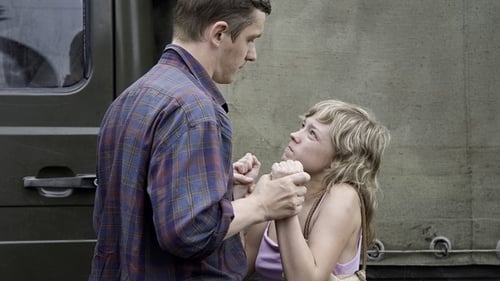
Screenplay
Georgy is driving a load of freight into Russia when, after an unpleasant encounter with the police at a border crossing, he finds himself giving a lift to a strange old man with disturbing stories about his younger days in the Army. After next picking up a young woman who works as a prostitute and is wary of the territory, Georgy finds himself lost, and despite asking some homeless men for help, he’s less sure than he was before of how to make his way back where he belongs. As brutal images of violence and alienation cross the screen, Georgy’s odyssey becomes darker and more desperate until it reaches an unexpected conclusion.

Director
Georgy is driving a load of freight into Russia when, after an unpleasant encounter with the police at a border crossing, he finds himself giving a lift to a strange old man with disturbing stories about his younger days in the Army. After next picking up a young woman who works as a prostitute and is wary of the territory, Georgy finds himself lost, and despite asking some homeless men for help, he’s less sure than he was before of how to make his way back where he belongs. As brutal images of violence and alienation cross the screen, Georgy’s odyssey becomes darker and more desperate until it reaches an unexpected conclusion.

Director
As he did with his critically-acclaimed "Blockade," a documentary re-creation of the WWII siege of Leningrad, which received its NY theatrical premiere in March 2007, filmmaker Sergei Loznitsa has once again scoured the Russian film archives for "Revue," selecting excerpts from newsreels, propaganda films, TV shows and feature films that present an evocative portrait of Soviet life during the 1950s and 1960s. With scenes taken from the length and breadth of the “Soviet Motherland,” "Revue" illustrates industry and agriculture, political life, popular culture, and technology. The film’s fascinating flow of disparate scenes representing typical Soviet life of the period is, seen from today’s perspective, alternately poignant, funny, and tragic

Director
Just before winter cloaks everything in the Arctic night, a few hours of daylight linger in late autumn in the village of Sumskoy Posad, one thousand kilometres north of Saint Petersburg, in Karelia, on the shores of the White Sea. Linked to the rest of the country by a vague muddy track and a stretch of railway line, the village lives in a suspended and mysterious dimension. This is the Russia of endless forests and potato fields. A few robust and uncompromising characters work calmly there, driven by no vital needs. This is a still happy and cold Russia.

Director
'Artel' portrays one day in the life of a small fisher community in the north of Russia.

Screenplay
The images comprise only of material Sergei Loznitsa found in the Moscow film archives about the siege of Leningrad during the World War II. By providing the originally silent images with a meticulously reconstructed soundtrack, the scenes from everyday life under siege seem to be set in the present. By not intervening in the montage but giving the scenes room to tell a story, the scenes transcend the specific historic events and lead a new life. They do not evoke memories of the past, but become a breathtaking reanimation of reality.

Director
The images comprise only of material Sergei Loznitsa found in the Moscow film archives about the siege of Leningrad during the World War II. By providing the originally silent images with a meticulously reconstructed soundtrack, the scenes from everyday life under siege seem to be set in the present. By not intervening in the montage but giving the scenes room to tell a story, the scenes transcend the specific historic events and lead a new life. They do not evoke memories of the past, but become a breathtaking reanimation of reality.

Director
Masculine and feminine, hard and soft, continuous and interrupted, whole and fragmented. All that is encompassed by just one day at the factory.

Writer
Winter. A bus stop in a small village. People are waiting for a bus. They talk. Listening to their conversations, the viewer can imagine the world they live in. United by the movement of the camera, the place and the people blend together.

Editor
Winter. A bus stop in a small village. People are waiting for a bus. They talk. Listening to their conversations, the viewer can imagine the world they live in. United by the movement of the camera, the place and the people blend together.

Director
Winter. A bus stop in a small village. People are waiting for a bus. They talk. Listening to their conversations, the viewer can imagine the world they live in. United by the movement of the camera, the place and the people blend together.

Director
This movie is a collection of portraits of residents of Russian countryside. Not a single word. Only long look into the camera. Landscape. Flow of time.

Director
This movie is about a day in life of the settlement for people with mental problems. Located in a peaceful countryside, it conveys an image of a pure, happy place, where people live and work together, in complete harmony. But there is a growing unexplainable feeling of anxiety and hopelessness.

Editor
Trains travel through the night without stopping. The clatter of the carriages quickly disappears, along with the wail of the locomotive. The people at the station are all asleep. But why are they so exhausted ? And what are they waiting for? Set inside an isolated train depot, The Train Station is one of Sergei Loznitsa's most haunting films. It is also one of his most pointed social critiques. In this film, we are brought to a remote train station deep in the Russian woods. It's nighttime. In the distance, we hear the clatter of locomotives. The station, a small wooden building, sits silently, surrounded only by snow and train tracks.

Director
Trains travel through the night without stopping. The clatter of the carriages quickly disappears, along with the wail of the locomotive. The people at the station are all asleep. But why are they so exhausted ? And what are they waiting for? Set inside an isolated train depot, The Train Station is one of Sergei Loznitsa's most haunting films. It is also one of his most pointed social critiques. In this film, we are brought to a remote train station deep in the Russian woods. It's nighttime. In the distance, we hear the clatter of locomotives. The station, a small wooden building, sits silently, surrounded only by snow and train tracks.

Editor
It was filmed in rural Russia, near the city of Smolensk. It shows a small village, where all young people are gone and only older people are left.

Director
It was filmed in rural Russia, near the city of Smolensk. It shows a small village, where all young people are gone and only older people are left.

Director
This movie is about one day on the construction site.

Director
Masculine and feminine, hard and soft, continues and interrupted, whole and fragmented. All that is encompassed by just one day at the factory.

Director






















